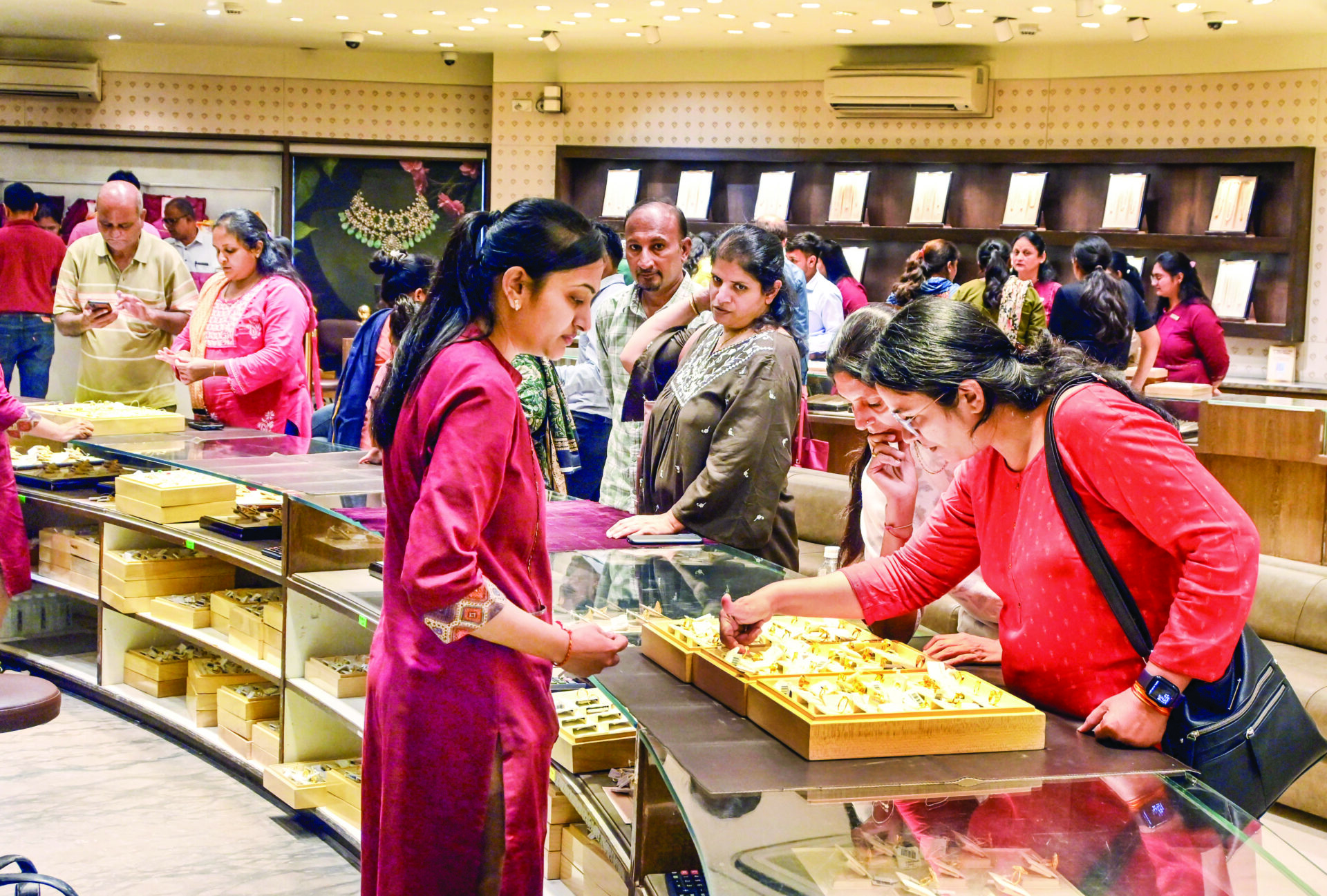New Delhi: India’s Diwali festivities are energizing market momentum, with anticipated high consumer spending and e-commerce activity projected to add to the country’s economic growth. Retailers expect record-breaking sales, especially as Diwali shopping peaks, aligning with the World Bank’s revised forecast for India’s 7.5% GDP growth in 2024. Festive demand is crucial for sectors like retail, automotive, and consumer goods, as consumer confidence returns post-COVID. This surge could counteract recent economic slowdowns and contribute significantly to India’s trajectory as the world’s fastest-growing economy
The World Bank report predicts that South Asia will remain the fastest-growing region globally, with an estimated growth rate of 6.1% by 2025. Amidst the challenging global scenario, India has emerged as an essential economic and geopolitical force. Actions in the coming year can lay the foundation for India to become the world’s third-largest economy within the next five years and a developed nation by 2047, setting examples in inclusive, sustainable growth, digital development, and climate action.
India has served as a critical growth engine for the world, contributing 16% to global growth in 2023. With a growth rate of 7.2% in the fiscal year 2022-2023, it had the second-highest growth rate among G20 nations and was nearly double the average growth of emerging market economies. India’s efforts in maintaining stability and implementing structural reforms have contributed to its resilience in the face of global challenges. Investments in infrastructure and connectivity through projects like the Bharatmala Highway Program, Sagarmala for port-based development, and the Smart Cities Mission are transforming the landscape and playing a crucial role in economic growth.
Over a decade ago, India began establishing a solid foundation for a digital economy with the launch of the Aadhaar program, a biometric ID for residence verification. Today, India, with its burgeoning tech industry, has become a major hub for innovation and technology services, driving economic growth and positioning India as a key player in shaping the future of the digital economy.
Amid growing climate concerns, India has also initiated the International Solar Alliance and the Coalition for Disaster-Resilient Infrastructure and proposed a global grid for renewable energy. Maharashtra led in attracting the highest foreign direct investment (FDI) during the first quarter of fiscal year 2024-2025, with Rs 70,795 crore in FDI. Neighbouring Karnataka ranked second, attracting Rs 19,059 crore in investment.
Overall FDI in the country increased by 47.8%, amounting to $16.17 billion, driven by capital flows in the services, computer, telecom, and pharma sectors. FDI inflows grew by 28% in the first quarter of the current fiscal year to $22.49 billion, up from $17.56 billion in the previous fiscal year. Equity, reinvested income, and other capital are included in total FDI inflow. The April-June FDI data reveal increased equity flow from countries like Mauritius, Singapore, the United States, the Netherlands, the UAE, the Cayman Islands, and Cyprus. India’s defense production surpassed Rs 1 lakh crore in fiscal year 2023, with exports exceeding Rs 16,000 crore. Defense production is expected to exceed Rs 1.5 lakh crore in fiscal year 2024, potentially reaching the target of Rs 1.75 lakh crore.
Despite political upheavals, Bihar’s economic development has garnered little attention. Recently, Bihar’s first dry port was inaugurated near Patna in Bihta. The dry port, developed in collaboration with a private company, is viewed as a significant initiative to boost exports of goods produced in Bihar.
The first shipment of leather shoes exported from the dry port was sent to Russia. Several investors have recently opened leather manufacturing units in Bihar, showing immense export potential for leather and apparel. Bihar achieved exports worth Rs 20,000 crore in 2022-23, a fact that few know. With the ICD at Bihta, the state is now looking to expand its export capacity.
In the first 100 days of Modi’s government, approximately Rs 15 lakh crore worth of projects were launched. The government has maintained the direction, pace, and accuracy of policies for ten years under Prime Minister Narendra Modi’s leadership. Infrastructure projects worth Rs 3 lakh crore were launched within the first 100 days. The construction of a mega port in Maharashtra’s Wadhavan, costing Rs 76,000 crore, will place it among the world’s top 10 ports from day one. The project to connect 25,000 villages with roads at a cost of Rs 49,000 crore and expand major Indian routes at Rs 50,600 crore is underway.
Efforts are being made to boost tourism through the upgrade of the Lal Bahadur Shastri International Airport in Varanasi, Bagdogra in West Bengal, Bihta in Bihar, and the construction of new airstrips at Agatti and Minicoy. Under the 17th installment of the Prime Minister Kisan Samman Scheme, Rs 20,000 crore was distributed to 9.50 crore farmers. So far, Rs 3 lakh crore has been distributed to 12.33 crore farmers in total. The minimum support price for Kharif crops has also been increased.
A strong youth population is essential for a country’s development. The government announced a PM package worth Rs 2 lakh crore, which aims to benefit 4.10 crore youth over the next five years. The government has also decided to provide internship opportunities, allowances, and one-time support to one crore youth in top companies. The central government has also announced several thousand appointments. Increasing capital expenditure to Rs 11.11 lakh crore is a milestone, creating new job opportunities for many youth and strengthening infrastructure.
Women are also connected with self-help groups for guide roles as tourism friends and drone training as ‘Drone Didis’. Young people are also being linked to tourism. Under the Tribal Advancement Village Campaign, 63,000 tribal villages will be fully developed, improving the economic condition of 5 crore tribal people. Under this plan, villages will be fully equipped with essential needs and facilities.
Diwali drives market growth amid 7.5% economic surge
इस शब्द का अर्थ जानिये
- Advertisement -

